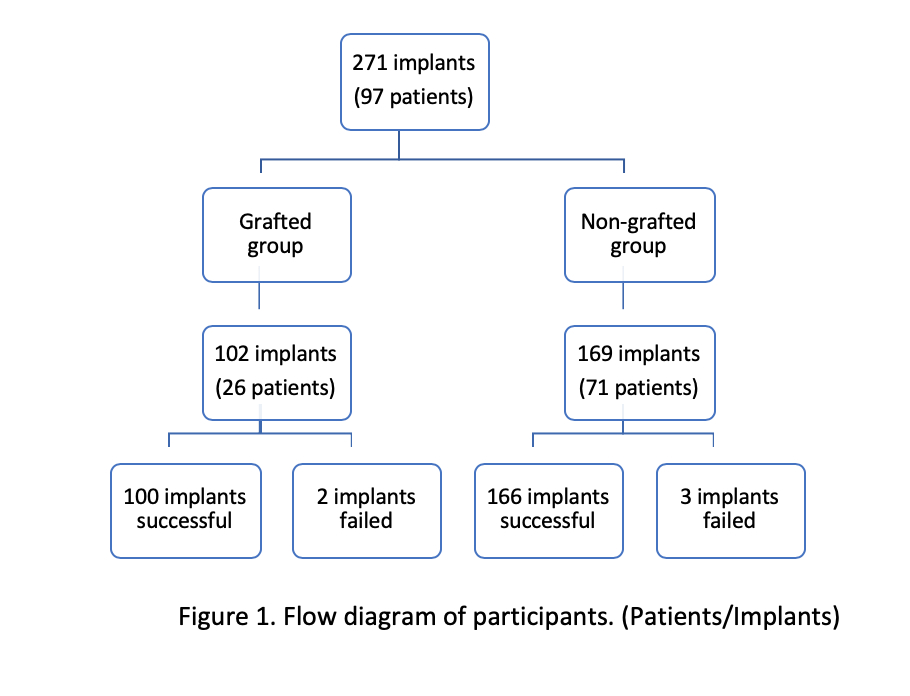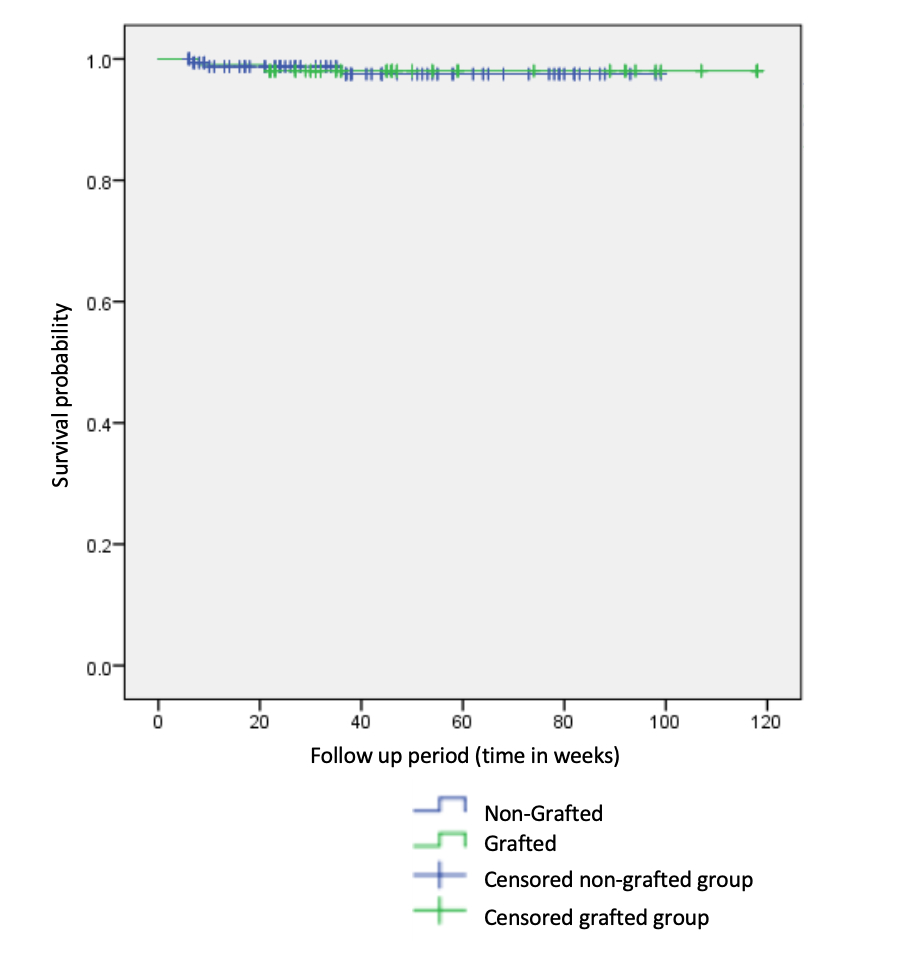IADR Abstract Archives
Conventional Implants with Sinus Floor Augmentation Vs Tilted Implant without Bone Grafts (All-on-4TM)
Objectives: The purpose of this study was to compare the 3-years clinical outcome of conventional implants placed in grafted bone compared with tilted or zygomatic implants in non-grafted bone (All-on-4TM treatment) in severe atrophic edentulous maxillae.
Methods: This retrospective cohort study included a total of 97 patients with atrophic posterior maxillae from East Coast Oral Surgery, Moncton, New Brunswick from January 2007 to September 2016. Twenty-six patients (102 implants) received conventional treatment with grafting technique (sinus floor augmentation) and seventy-one patients (169 implants) received All-on-4 treatment (tilted implants or zygomatic implants) without grafting technique. Patient-based demographic parameters (age, gender, smoking habits) and implant-based demographics (diameter, length, torque, implant site and implant loading) were collected as the secondary outcome. The difference of patient or implant-based demographics between two groups were compared by student t-test. Mixed effect survival model was used and Kaplan–Meier survival curves were plotted to describe the cumulative proportion of dental implant failure.
Results: Kaplan–Meier mixed modeled survival analysis showed, there was not significant difference regarding implant survival rate in both treatment groups. In the grafted group, 26 patients received 102 implants of which 2 failed; in the graftless group 71 patients received 169 implants of which 3 failed. The average age in the non-grafted group was significantly higher (66.4 ± 7.7 years) than in the grafted group (62.9 ± 7.8 years)(p=0.001). 84.6 ± 2.6 % of the non-grafted implants were immediately loaded. The average implant diameter in both groups was 4.1 ± 0.2 mm and the average implant length in the non-grafted group (22.8± 12.8 mm) was significantly larger than in the grafted group (11.5±1.2) (p=0.001). Also, average implant torque was significantly higher in the non-gafter group (34.4±11.8 Ncm) when compared to the grafted group 21.7±7.4 Ncm).
Conclusions: Compared to conventional implants placed in grafted bone, the non-grafted group showed not significant differences regarding survival rate. Moreover, the non-grafted group required significantly less time to function, less morbidity and fewer visits to dental clinic.
Methods: This retrospective cohort study included a total of 97 patients with atrophic posterior maxillae from East Coast Oral Surgery, Moncton, New Brunswick from January 2007 to September 2016. Twenty-six patients (102 implants) received conventional treatment with grafting technique (sinus floor augmentation) and seventy-one patients (169 implants) received All-on-4 treatment (tilted implants or zygomatic implants) without grafting technique. Patient-based demographic parameters (age, gender, smoking habits) and implant-based demographics (diameter, length, torque, implant site and implant loading) were collected as the secondary outcome. The difference of patient or implant-based demographics between two groups were compared by student t-test. Mixed effect survival model was used and Kaplan–Meier survival curves were plotted to describe the cumulative proportion of dental implant failure.
Results: Kaplan–Meier mixed modeled survival analysis showed, there was not significant difference regarding implant survival rate in both treatment groups. In the grafted group, 26 patients received 102 implants of which 2 failed; in the graftless group 71 patients received 169 implants of which 3 failed. The average age in the non-grafted group was significantly higher (66.4 ± 7.7 years) than in the grafted group (62.9 ± 7.8 years)(p=0.001). 84.6 ± 2.6 % of the non-grafted implants were immediately loaded. The average implant diameter in both groups was 4.1 ± 0.2 mm and the average implant length in the non-grafted group (22.8± 12.8 mm) was significantly larger than in the grafted group (11.5±1.2) (p=0.001). Also, average implant torque was significantly higher in the non-gafter group (34.4±11.8 Ncm) when compared to the grafted group 21.7±7.4 Ncm).
Conclusions: Compared to conventional implants placed in grafted bone, the non-grafted group showed not significant differences regarding survival rate. Moreover, the non-grafted group required significantly less time to function, less morbidity and fewer visits to dental clinic.


